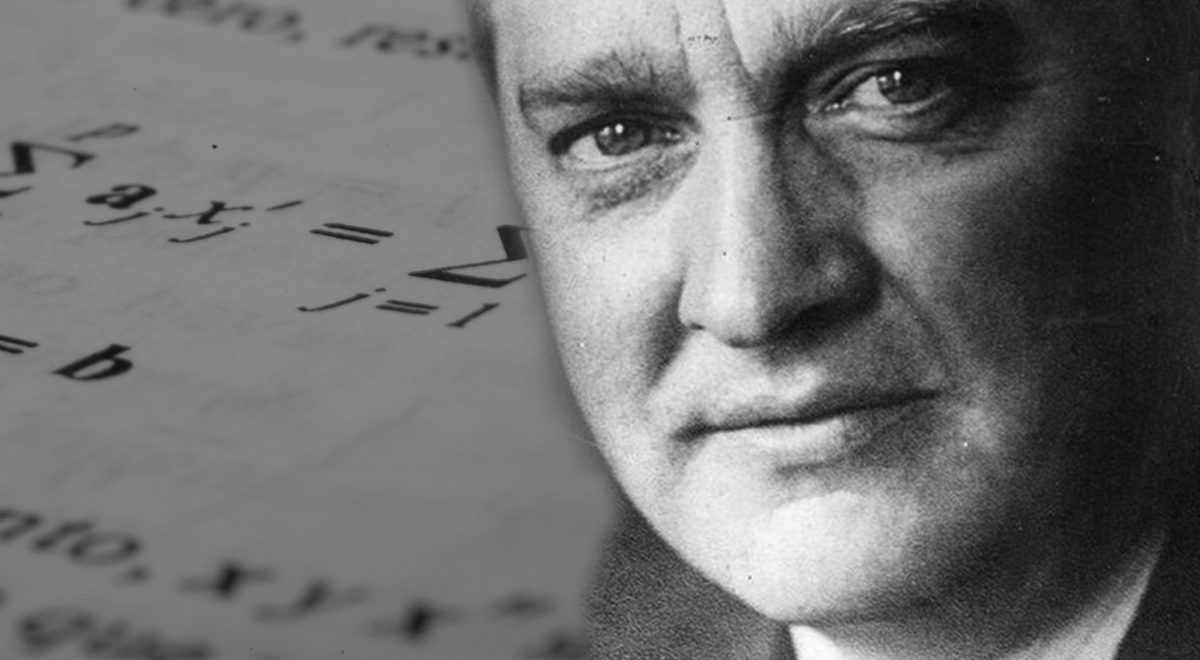
Stefan Banach is widely regarded as one of the most brilliant mathematicians of the 20th century. His contributions to the field of functional analysis and his work on topological vector spaces have revolutionized the world of mathematics. But beyond his mathematical prowess, Banach led a fascinating life filled with eccentricities and achievements that are truly mind-blowing. From his humble beginnings in Poland to his collaborations with other renowned mathematicians, there are numerous intriguing facets to his story. In this article, we will delve into 15 mind-blowing facts about Stefan Banach, shedding light on the incredible genius and unique personality of this mathematical legend.
Key Takeaways:
- Stefan Banach was a brilliant mathematician who revolutionized the study of functional analysis and made significant contributions to various branches of mathematics.
- Despite facing adversity, Banach’s work continues to influence mathematics today, and his legacy lives on through the Banach Center in Warsaw, Poland.
The Polish mathematician Stefan Banach was a pioneer in functional analysis.
Stefan Banach, widely regarded as one of the most influential mathematicians of the 20th century, made significant contributions to the field of functional analysis. His work on normed vector spaces, Banach spaces, and Banach algebras revolutionized the study of mathematical analysis.
Banach was a co-founder of the Lwów School of Mathematics.
Together with other prominent mathematicians such as Hugo Steinhaus and Stanis?aw Ulam, Banach established the Lwów School of Mathematics in Lviv, which later became a center for groundbreaking research in mathematics.
Banach introduced the concept of complete metric spaces.
One of Banach’s notable contributions was the development of the theory of complete metric spaces, now known as Banach spaces. Complete metric spaces are fundamental in various branches of mathematics and have applications in physics and engineering.
Banach is famous for formulating the Banach-Tarski paradox.
The Banach-Tarski paradox, proposed independently by Stefan Banach and Alfred Tarski, states that it is possible to divide a solid object into a finite number of pieces and then reassemble those pieces to obtain two identical copies of the original object. This counterintuitive result challenges our understanding of geometry and set theory.
He contributed to the theory of topological vector spaces.
As a leading figure in functional analysis, Banach made significant advancements in the study of topological vector spaces. His work in this area laid the foundation for the development of modern functional analysis and its applications in diverse fields.
Banach spaces are named in his honor.
In recognition of his immense contributions to the field of analysis, the concept of Banach spaces was named after Stefan Banach. Banach spaces form a cornerstone of modern mathematics and are extensively studied in various branches of analysis.
He co-authored the influential book “Theory of Linear Operations.”
Together with his colleague, Juliusz Schauder, Banach wrote the seminal book “Theory of Linear Operations.” This comprehensive work has been highly influential in the field of functional analysis and has become a standard reference for mathematicians worldwide.
Banach was imprisoned during World War II.
During the Nazi occupation of Lviv, Banach and his colleagues were arrested and imprisoned by the Nazis. Despite the challenging circumstances, Banach continued to pursue mathematics and even taught his fellow prisoners. His resilience and determination even in the face of adversity is truly remarkable.
Banach was a recipient of the Stalin Prize.
In recognition of his outstanding contributions to mathematics, Banach was awarded the Stalin Prize in This prestigious honor further solidified his reputation as one of the most important mathematicians of his time.
Banach’s mathematical intuition was legendary.
Renowned for his exceptional mathematical intuition, Banach had a remarkable ability to quickly grasp complex mathematical concepts and formulate insightful conjectures. His intuitive approach to problem-solving greatly influenced the development of mathematics.
He made significant contributions to the study of harmonic analysis.
Another area where Banach excelled was harmonic analysis. His work on Fourier series and the theory of orthogonality transformed the field and had a profound impact on the understanding of various mathematical phenomena.
Banach’s famous quote: “A mathematician is a machine for turning coffee into theorems.”
Known for his love of coffee and his relentless dedication to mathematics, Banach once famously said, “A mathematician is a machine for turning coffee into theorems.” This quote reflects his passion for the subject and his remarkable work ethic.
His contributions to mathematics continue to influence research today.
Even decades after his death, Banach’s ideas and methods are still the subject of active research and continue to shape the field of mathematics. His impact on the development of functional analysis and other areas of mathematics is immeasurable.
Banach was known for his collaborative approach to mathematics.
Banach firmly believed in the power of collaboration and frequently collaborated with other mathematicians. His collaborations led to numerous breakthroughs and advancements, fostering a spirit of cooperation and intellectual growth among mathematicians.
His legacy lives on through the Banach Center.
The Banach Center, located in Warsaw, Poland, is a research institute dedicated to the promotion and advancement of mathematics. It serves as a testament to Banach’s enduring influence and his commitment to the mathematical community.
Conclusion
In conclusion, Stefan Banach was undeniably a brilliant mathematician whose contributions have left a lasting impact on the field. His groundbreaking work in functional analysis and set theory revolutionized the way we understand mathematics. Through his collaboration with other great minds like Alfred Tarski, Banach established the foundation for modern mathematical research.Banach’s life journey from a small village in Poland to becoming one of the most renowned mathematicians of the 20th century is truly inspiring. His ability to overcome personal and professional challenges highlights his unwavering passion for mathematical exploration.As we reflect on the mind-blowing facts about Stefan Banach, we are reminded of the power of human intellect and the endless possibilities that lie within the realm of mathematics. Banach’s legacy will continue to inspire generations of mathematicians to delve deeper into the mysteries of numbers, equations, and the boundless wonders of the universe.
FAQs
1. What were Stefan Banach’s major contributions to mathematics?
Stefan Banach made significant contributions to functional analysis, a branch of mathematics that focuses on vector spaces and operators. He introduced the concept of Banach spaces, complete normed spaces that have profound applications in many areas of mathematics and physics.
2. Was Stefan Banach only known for his mathematical achievements?
No, Stefan Banach’s influence extended beyond mathematics. He played an instrumental role in the education and nurturing of future mathematicians as a professor at the University of Lviv. His mentorship and collaboration with other mathematicians, including his work with Alfred Tarski, have also left a lasting impact on the field.
3. What challenges did Stefan Banach face during his career?
Stefan Banach faced significant challenges during his career, including the disruption caused by World War II and the Nazi occupation of Poland. Despite these obstacles, he continued his mathematical pursuits and made remarkable advances in the field.
4. How did Stefan Banach’s work influence modern mathematics?
Stefan Banach’s work, particularly in functional analysis and set theory, laid the foundation for many areas of modern mathematics, including topology, measure theory, and probability theory. His concepts and theorems are widely studied and applied by mathematicians today.
5. What was Stefan Banach’s impact on the field of mathematics?
Stefan Banach’s impact on the field of mathematics is immeasurable. His pioneering work in functional analysis revolutionized the way mathematicians approach and solve problems. His ideas and insights continue to shape the direction of mathematical research and inspire generations of mathematicians worldwide.
Stefan Banach's groundbreaking work in mathematics continues to inspire and challenge scholars worldwide. His paradoxical findings, like the Banach-Tarski paradox, demonstrate the mind-bending nature of his research. Banach's legacy endures through the countless theorems and spaces bearing his name, a testament to his lasting impact on the field.
Was this page helpful?
Our commitment to delivering trustworthy and engaging content is at the heart of what we do. Each fact on our site is contributed by real users like you, bringing a wealth of diverse insights and information. To ensure the highest standards of accuracy and reliability, our dedicated editors meticulously review each submission. This process guarantees that the facts we share are not only fascinating but also credible. Trust in our commitment to quality and authenticity as you explore and learn with us.


